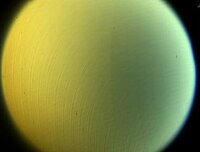
Photo from wikipedia
Air rifle and air pistol target shooting are included in major intentional and national sports competitions and are also highly popular sport pastimes. Published scientific studies of pellet drag are… Click to show full abstract
Air rifle and air pistol target shooting are included in major intentional and national sports competitions and are also highly popular sport pastimes. Published scientific studies of pellet drag are very rare, in contrast to a large number of scientific studies published on aerodynamic drag of sports balls and other sports projectiles. Measurements are presented of the drag coefficients for 31 air rifle pellets of mainly 4.5 mm (0.177 in) calibre having a wide range of geometries. The drag coefficient measurements were made with a low-turbulence open wind tunnel at flow velocity of 200 m/s (Mach and Reynolds numbers 0.57 and 56,000 for 4.5 mm pellets). The detailed geometry of some pellets was altered systematically in order to improve understanding of how pellet geometry affects drag coefficient. The drag coefficient for the 31 pellets varied widely from 0.36 to 0.78, and it was influenced substantially by the curvature of the flow separating from the pellet head rim. Large curvatures delayed flow re-attachment onto the pellet tail, thereby lowering pellet base pressure and increasing the value of drag coefficient. Pellets with hemi-spherical or ogive-shaped noses generally had lower values of drag coefficient than pellets with other nose shapes. The presence of the pellet tail was beneficial by providing a surface onto which the flow detaching from the pellet rim could re-attach. However, for minimisation of drag coefficient, the pellet tail had to be of a certain optimum length which depended on the shape of the pellet nose. Small differences in pellet geometry had significant influence on the value of drag coefficient. Increase in air velocity from 120 to 200 m/s had small influence on the value of drag coefficient for three common sports pellets having flat, conical and dome-shaped noses.
Journal Title: Proceedings of the Institution of Mechanical Engineers, Part C: Journal of Mechanical Engineering Science
Year Published: 2021
Link to full text (if available)
Share on Social Media: Sign Up to like & get
recommendations!